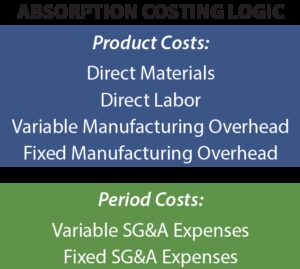How to use bank rules in QuickBooks Online
Solved: Remove erroneous undeposited funds in QuickBooks Desktop
07/07/2021Регистрация счета в онлайн-терминале Libertex
20/07/2021
This process allows users to define specific conditions, such as keywords or descriptions, and then specify corresponding actions to be taken when transactions meet those conditions. For example, a user can set a rule to categorize all transactions containing the keyword ‘office supplies’ under the ‘Office Expenses’ category. By incorporating relevant keywords and conditions, users streamline the transaction management process, ensuring consistency and accuracy in financial records.
Step 1: Create a bank rule
These rules are essential for streamlining the process of handling a large volume of transactions effectively. To define a rule, one can specify conditions based on transaction data such as amount, payee, category, or memo. This process optimizes rule management and ensures that the system is not cluttered with unnecessary or outdated rules. To select a rule for deletion, users should first review their existing rules to identify those that are no longer required or are creating conflicts in transaction categorization. They can then navigate to the Rules section in QuickBooks Online, locate the specific rule, and proceed with the deletion process. This simplifies the process of managing transactions and ensures that the categorization aligns more closely with the unique needs of the business.
Related Posts on Redmond Accounting CA
Both features aim to save time and streamline financial processes, but they target different aspects of transaction management. Hover over Banking in the left vertical pane and select Banking to open your transaction list. Be sure that you’re looking at transactions that are still For review, as these are the only ones that can be assigned to Rules. Hover over Banking in the left vertical pane and select Banking to open your transaction list. Be sure that you’re looking at transactions that are still For review, as these are the only ones that can be assigned to Rules.
Selecting the Rule to Edit
- When you undo them, it can affect your accounts especially if they are reconciled.
- These rules are triggered when you sign in, upload a file, or create or edit a new auto-add rule.
- Creating rules in QuickBooks Online involves setting up automated instructions to categorize and manage transactions, providing a systematic approach to organizing financial data.
- Meaning the categorizing only applies to transactions that are currently coming in from your bank that need to be accepted.
These rules are triggered when you sign in, upload a file, or create or edit a new auto-add rule. You can create rules that automatically categorize transactions for you. The more QuickBooks uses your bank rules, the better it gets at categorizing.
Accounting Services

By navigating to the Banking menu and selecting the “Banking” section, users can access the “Rules” tab. Once there, they can view, add, edit, or delete rules to streamline transaction processing. Modifying the rule’s conditions and actions in QuickBooks Online involves adjusting the criteria and instructions that govern automated transaction categorization and management. Selecting the rule to edit in QuickBooks Online allows users to choose a specific automated instruction set and modify its criteria and actions for transaction management.
Your projects are processes,
If you have created a backup copy of your company file before entering/adding the downloaded transactions, you can restore a backup company file and start over. The recurring transactions feature in QuickBooks Online allows you to create templates for repetitive transactions that occur regularly. Journal entries are the last resort for entering transactions. They let you move money between accounts and force your books to balance in specific ways. Use them only if you understand accounting or you’re following the advice of your accountant.
By removing rules, users can optimize their rule management, ensuring that only the most relevant and essential instructions are in place. This helps prevent misclassification of transactions and can lead to more accurate financial reporting. When creating a new rule in QuickBooks Online, users can define specific instructions to categorize and manage transactions automatically, enhancing the efficiency of financial data organization. By confirming the deletion of a rule in QuickBooks Online, users ensure that any previously set conditions, such as categorizing transactions or automatically assigning specific actions, are permanently removed. This process streamlines the management of transactions, allowing for greater accuracy and control over financial records.
This process can be initiated by navigating to the Banking tab and selecting the Banking Rules option. Once within the Banking Rules section, users can identify the specific rule they want to edit by reviewing the existing list of rules. QuickBooks Online’s Rules can save time if you have a large volume of similar transactions. But if they’re not created with absolute accuracy, you risk mischaracterizing or missing transactions you should have reviewed before adding them to the Reviewed queue. We at Reconciled Solutions would be happy to help here to ensure that that doesn’t happen, so that you can take full advantage of the helpful Rules feature.
Rules in QuickBooks Online are automated instructions that help categorize and manage transactions efficiently, providing a streamlined approach to organizing financial data. To save time when reviewing QuickBooks Online banking transactions, you can apply automated Rules. QuickBooks Online offers banking rules to categorize transactions in the Banking tab accurately.
Ready to streamline your accounting processes and elevate your QuickBooks experience? Assisting small businesses and entrepreneurs succeed with new techniques and innovative solutions that drive profitability while streamlining processes and procedures. Any transaction for over that amount will remain in the queue for approval.
The Reviewed tab was included in the recent update and was changed to Categorized. There are three Bank Feed modes available in QuickBooks Desktop. If your business does not require creating sales orders are long arms sexier than long legs or estimates, your A/R workflow starts with creating the invoice. Use our product selector to find the best accounting software for you. A. Using method #1 from above, click the “create a rule” button.
See articles customized for your product and join our large community of QuickBooks users. Find out more about how features and data move to QuickBooks Online. Ask any advisor what they need more of and chances are they won’t say clients first—they’ll say time. While we’re incapable of offering you more than 24 hours in a day (if any outsourced solution claims otherwise, run in the opposite direction), we can offer you some of your time back.
QuickBooks Online has an added feature called Rules (or Bank Rules). It saves you time by setting up automatic categorisation of regular recurring transactions even if they are slightly different each month. It also allows you to customise many variables of the bank feed data to highly automate the bank transactions you accept into QuickBooks Online. By fine-tuning the rule management, users can ensure that the platform accurately categorizes transactions, providing a clear and organized overview of the company’s financial activities. Creating a rule in QuickBooks Online involves setting up automated instructions to categorize and manage transactions, providing a systematic approach to organizing financial data. This customization process provides a method for tailoring the system’s responses to specific transaction attributes, such as amount, payee, or category.
Rules like these can save you from having to update categories and adjust transactions one by one. We’ve said this in previous blog posts, training services, webinars, office hours, basically to anyone who will listen… add a vendor or payee to every transaction. This step is also very important as it will decide which account on your books the transaction what financial liquidity is asset classes pros and cons examples will go to. If you are unsure of which account to use, search for the vendor name and find how the transaction was previously categorized. Let’s make sure you’ll be able to correct your transactions on the previous months, almostthere. The QuickBooks Developers does product enhancements when there are new features or things that need to be changed.
You can create rules to categorize transactions for things you often spend money on, like supplies or business expenses. The Rules feature in QuickBooks Online is primarily used for automating the categorization and processing of transactions imported from your bank or credit card accounts. They can speed up the review process sales journal: explanation format and example by automatically categorising your transactions for you. The more you use these rules in QuickBooks, the smarter it gets at categorising. Over time, it can even scan transactions and add details like payees. When you download transactions from your bank, you need to categorize them so they go into the right accounts.
